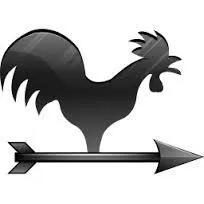Doubt about food labeling / amount of natural sugar and added
Hello, good morning to everyone,
My name is Pere, I am from Barcelona and it is the first time I enter this forum, so apologize if the question is already in some previous thread and for my ignorance.
My question is related to my partner, since they have made a blood test in which the value of sugar has risen from 108 to 124 in 2 years, when we usually have a quite balanced diet without excess sugar (so thatWe do not know very well where to cut it in terms of food), but does not play sports regularly and has spent two years with labor issues, two factors that increase blood sugar values.
The issue is that we are trying to "understand" or "decipher" the labels with nutritional information but three doubts arise ...:
- Where it indicates "Carbohydrates ... of which sugars ...", does it refer to natural sugars, or added?
- It is related to the previous one ... but in an article I read that the difference between the HC and the sugars were actually added sugars ... and that that was precisely what had to be monitored since "fired" the values inblood.In another article I read that the HC are only fiber, sugar and starch ... What do I pay attention to?
- The conclusion that I take is that the sugar values on the labels are undercover, since if I read the information of a frozen pizza it seems that it has less sugar than certain fruits or vegetables ... so that how does the calculation calculate thetotal quantity (natural and added) that has a product through its labeling?
Sorry for the "billet", but I am trying to buy better, eat more balanced, with the aim of controlling sugar (it can be said that we have already begun to exercise routine and frequent).
Thank you so much!!And I appreciate the existence of this forum, I think it is very useful.
All the best
12/27/2017 9:25 p.m.
Hi Pere.I just look at the total number of carbohydrates.What I am in mind is whether it is fast or slow absorption carbohydrates.
You also have to be careful with the fats and proteins that are ingested.

12/28/2017 2:24 p.m.
perecarmona said:
hello, good morning to all,My name is Pere, I am from Barcelona and it is the first time I enter this forum, so apologize if the question is already in some previous thread and for my ignorance.
My question is related to my partner, since they have made a blood test in which the value of sugar has risen from 108 to 124 in 2 years, when we usually have a quite balanced diet without excess sugar (so thatWe do not know very well where to cut it in terms of food), but does not play sports regularly and has spent two years with labor issues, two factors that increase blood sugar values.
The issue is that we are trying to "understand" or "decipher" the labels with nutritional information but three doubts arise ...:
- Where it indicates "Carbohydrates ... of which sugars ...", does it refer to natural sugars, or added?
- It is related to the previous one ... but in an article I read that the difference between the HC and the sugars were actually added sugars ... and that that was precisely what had to be monitored since "fired" the values inblood.In another article I read that the HC are only fiber, sugar and starch ... What do I pay attention to?
- The conclusion that I take is that the sugar values on the labels are undercover, since if I read the information of a frozen pizza it seems that it has less sugar than certain fruits or vegetables ... so that how does the calculation calculate thetotal quantity (natural and added) that has a product through its labeling?
Sorry for the "billet", but I am trying to buy better, eat more balanced, with the aim of controlling sugar (it can be said that we have already begun to exercise routine and frequent).
Thank you so much!!And I appreciate the existence of this forum, I think it is very useful.
All the best
What increases glucose values are carbohydrates, in general.The sugars are a carbohydrate more and, like the rest, glycemia will rise.Therefore, to control the glycemia values you must control not only the sugar of a food, but the total carbohydrates it contains, so fix in that in the labeling ... It is true that if you intend to control a certain glycemic mismatch(Without diagnosed diabetes) it would be advisable to eat foods with low glycemic index, which are carbohydrates that are more slowly absorbed in the organism and avoid glycemia peaks after intake (eg the chickpeas).Any other questions, here we are here to help each other

12/28/2017 2:49 p.m.
30 años. Diabetes tipo 1 desde los 10
Medtronic Minimed 640g
NovoRapid
hA1c: 6%
Sensor Enlite
Thanks a lot!We will take it into account, no doubt!
All the best
12/28/2017 3:09 p.m.
Added sugars are sucrose or pure glucose.The other hydrates are more complex and slower. But they all go up.

12/28/2017 5:32 p.m.
Hija de 35 años , diabética desde los 5. Glico: normalmente de 6 , pero 6,7 la última ( 6,2 marcaba el Free)
Fiasp: 4- 4- 3 Toujeo: 20
Hello
I take the thread for a question I have:
When in a diet by rations, you have fixed for example 4 rations at breakfast and oats of oats with its HC content and low sugar content but then you go to say an alternative, to samples where you weigh the equivalent amount to have the sameHydrates but half or more of those HC are sugars What should do? Reduce the amount of samples due to the high glycemic index?How could you face that rapid sugar rise with an insulin and portion pattern?It is that in the end the insulin ratio and rations is the same but I am clear that those two or three hours after eating one thing and another, it would not be the same as glymatics.
Thank you
03/03/2018 12:28 a.m.
Depending on the value you have in the post, you calculate the rapid you need.

03/03/2018 1:03 p.m.
Hija de 35 años , diabética desde los 5. Glico: normalmente de 6 , pero 6,7 la última ( 6,2 marcaba el Free)
Fiasp: 4- 4- 3 Toujeo: 20
tiver said:
hello
I take the thread for a question I have:
When in a diet by rations, you have fixed for example 4 rations at breakfast and oats of oats with its HC content and low sugar content but then you go to say an alternative, to samples where you weigh the equivalent amount to have the sameHydrates but half or more of those HC are sugars What should do? Reduce the amount of samples due to the high glycemic index?How could you face that rapid sugar rise with an insulin and portion pattern?It is that in the end the insulin ratio and rations is the same but I am clear that those two or three hours after eating one thing and another, it would not be the same as glymatics.
Thanks
For food with high glycemic index it is convenient to wait a little more since you put insulin until you start eating, since absorption will be faster and also the most marked postprandial glycemic peak.If you increase the waiting time and make more insulin circulating in the blood, when carbohydrate is absorbed, you will greatly reduce that climb and the rapid metabolize perfectly the carbohydrates you eat, at the same ratio you usually use.It is important in diabetes to know how to eat and control all foods, those of high and low glycemic index since we have to eat absolutely everything, if you exclude any product from our diet.

03/03/2018 1:18 p.m.
30 años. Diabetes tipo 1 desde los 10
Medtronic Minimed 640g
NovoRapid
hA1c: 6%
Sensor Enlite
perisharmony said:
Hello, Pere.So I understand your partner has a prediabetes type 2 .It is important to reduce the free sugar of the diet, both for the general population, and for the population overweight, and especially for a person with prediabetes.But can make prediabetes evolve to diabetes without taking a single gram of sugar .It is not the only element of the diet that can cause diabetes, since any food that favors weight gain can be involved.You can make a very poor sugar diet but very rich in other carbohydrates, in fatty meats, and poor in vegetables and fruits, and with this you will be favoring the appearance of type 2 diabetes. The most important thing is to make a Healthy diet (they should explain it in their health center) and make a life at least sedentary better .In your case it is not necessary to make a diet to count carbohydrates to the exact ration , because it does not take any drug or have to adjust insulin doses to it.
perisharmony said:
- where indicates "carbohydrates ... of which sugars ...", does it refer to natural sugars, orAdded?
Where it indicates "sugars", refers to all sugars present in food, both natural and added .It depends on the type of food, it is easy to know if they are natural or added.If it is a can of Coca Cola, they will probably be added in the form of corn syrup rich in fructose.If it is a natural yogurt without sweetening, the sugars that appear will be all natural, by the sugars naturally present in milk.If it is a sugary yogurt, part of the sugars that appear will be natural and part added.But the important thing in your case is not that you look at the amount of sugars it contains in nutritionfructose, glucose syrup, maltodextrinas, etc.).The healthier the diet is, the less products with ingredient labels there should be in between, since the healthier the diet is, it will be because more without processing food has.perisharmony said:
in an article I read that the difference between HC and sugars were actually added sugars ... and that was precisely what had to be monitored since "fired"Blood values
To the first: no.Milk has unlaimed sugars (naturally present in it), and in nutritional information it will appear as such (such as "sugars").A processed product can have artificially added rice flour, and will not appear as "sugar" because it is not, it is a starch, and yet it is a rapid absorption carbohydate, which can "shoot" the levelsof sugar.A sugary drink can carry corn syrup rich in fructose, and that technically "does not shoot" sugar values, but it is very unhealthy, because such high amounts of fructose (much larger than those contained in an apple, for example) causeHypertriglyceridemia, fatty liver, etc.
Conclusion: neither all sugars are bad, nor all carbohydrates that are not sugar are good.
perisharmony said:
the conclusion I take is that the sugar values on the labels are undercover, since if I read the informationFrom a frozen pizza it seems that it has less sugar than certain fruits or vegetables ... so that how does the total amount (natural and added) calculate that has a product through its labeling?Blockquote>
It is not that they are undercover: a pizza contains many carbohydrates, because the base is made of wheat flour, and maybe it contains much less sugar than an apple. That does not mean, or by far, that for your partner the pizza is much more beneficial than an apple, on the contrary.In summary, what your partner has to do is a healthy diet, increase physical activity and lose weight (you don't say it in your message, but because of the clinical context I deduce that it is so).What is a healthy diet?There are many ways to do it, but if you are looking on Google "Healthy Harvard dish" there will be a lot of images and videos that explain how to do it.In a pre-type 2 pre-/diabetes there is nothing more than that.It is more important to choose the proportion and type of food than not to look at precooked pizzas labels and decide what you eat based on the hydrates of hydrates it contains.
03/04/2018 2:20 p.m.